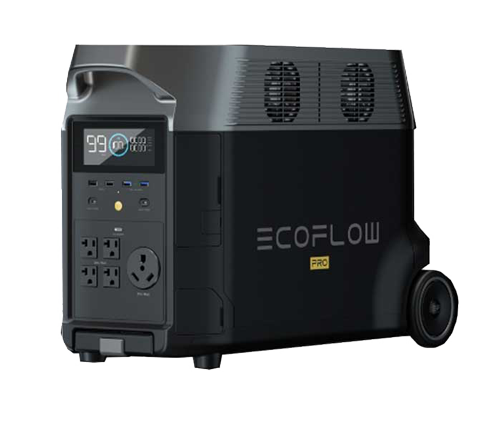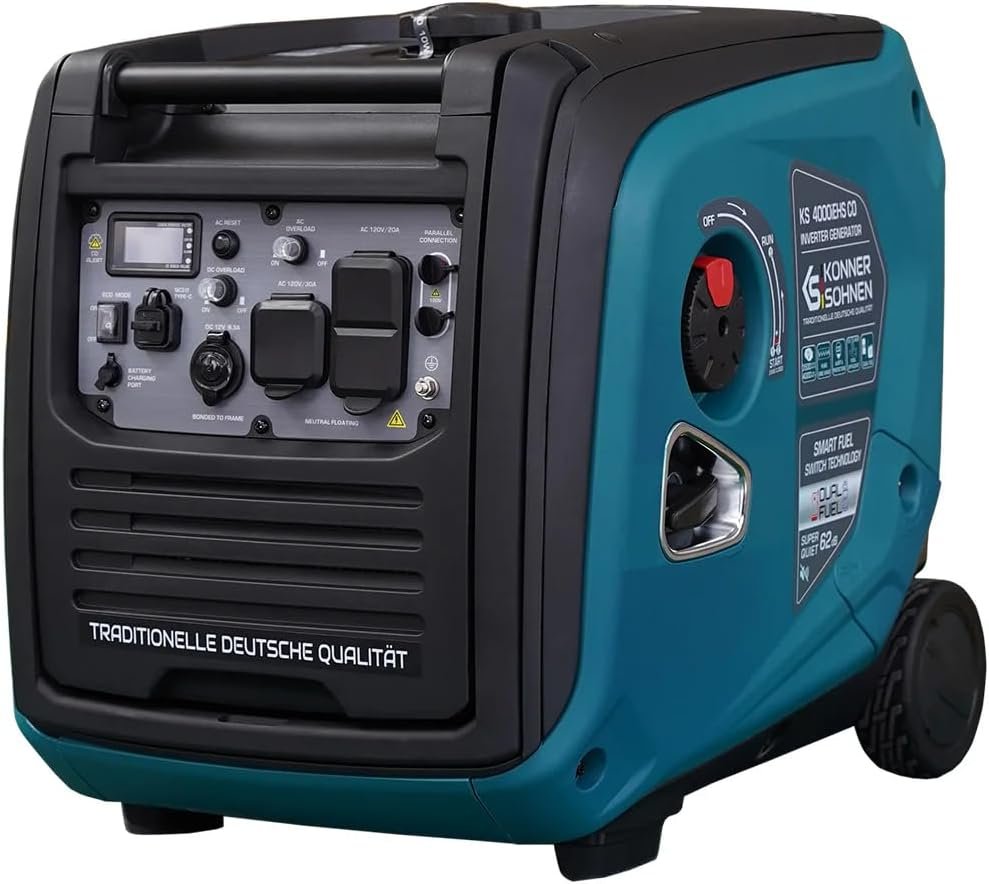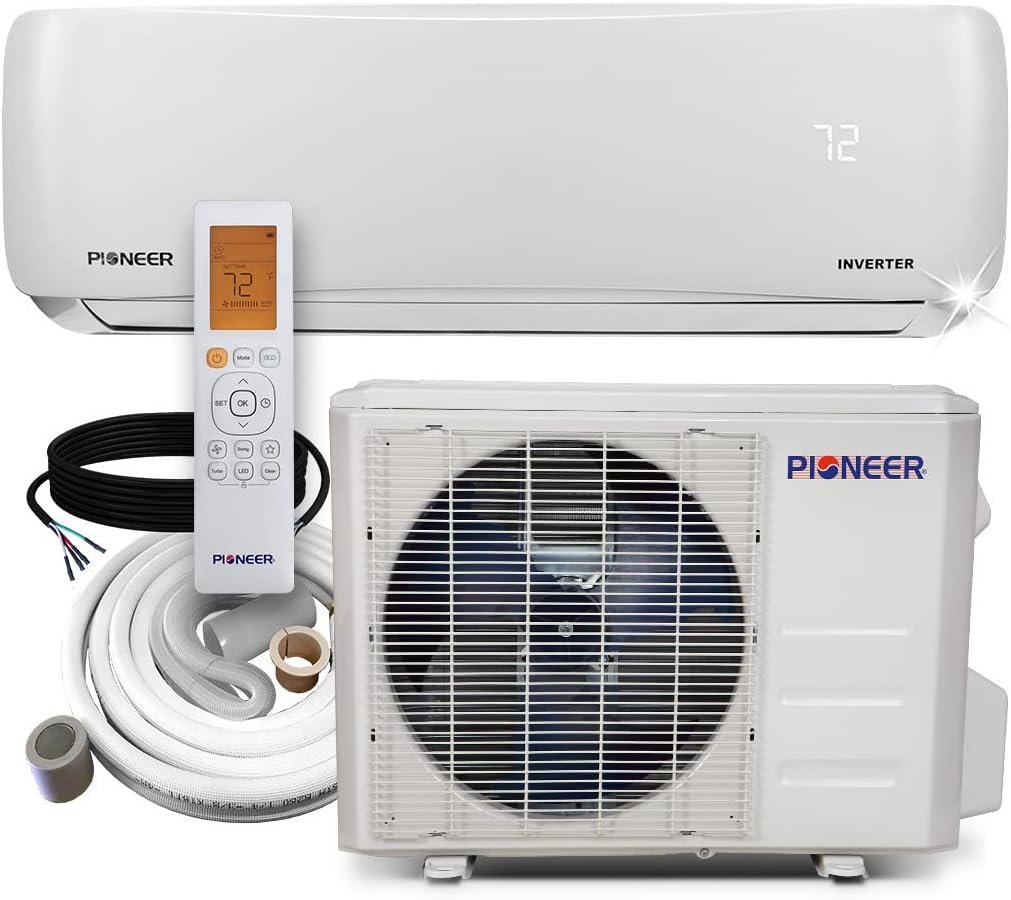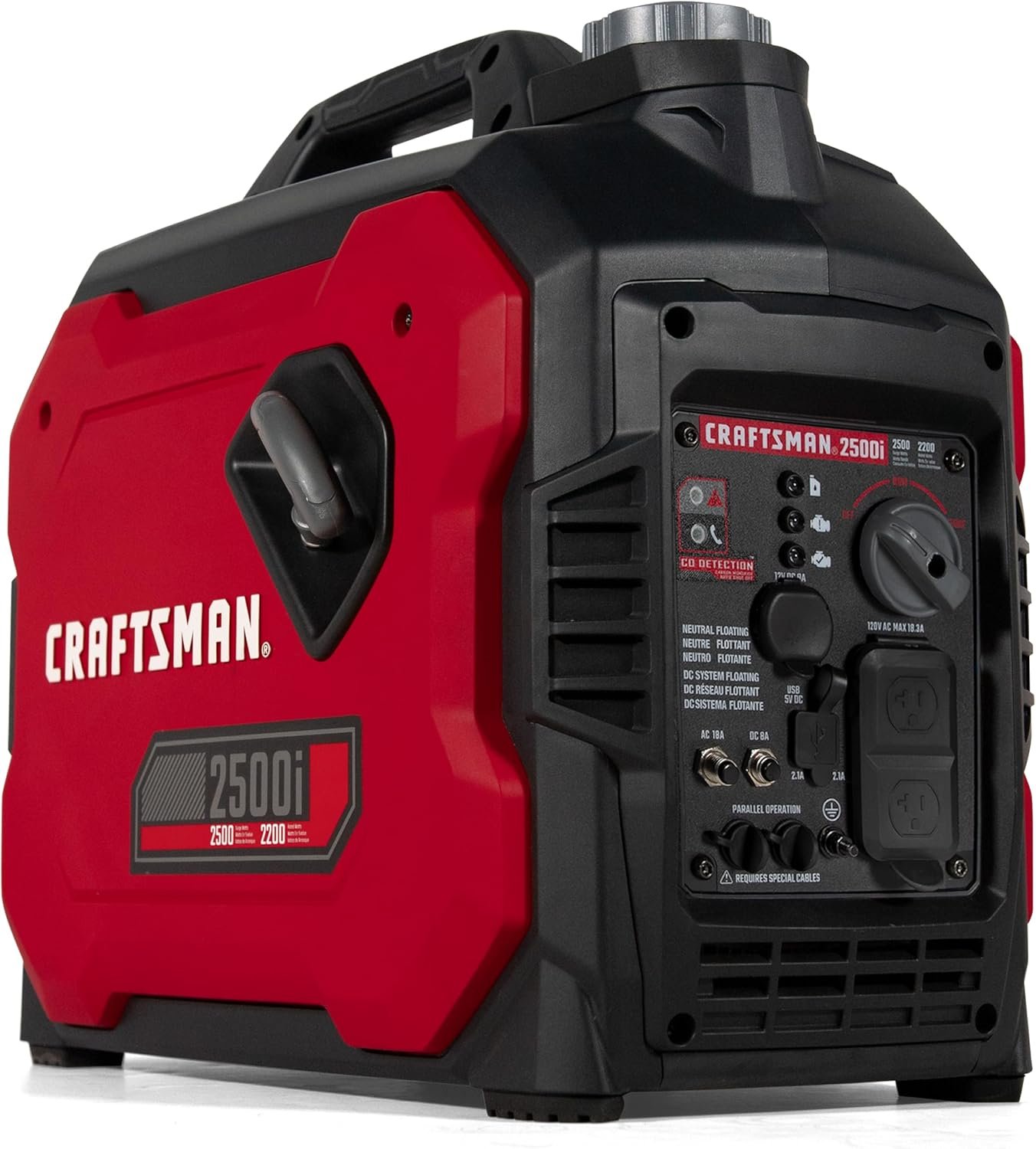The Complete Guide to Anker Portable Power Stations in 2025: Which SOLIX Model Is Right For You?
Anker Portable Power Stations – Remember the last time a power outage left you in the dark, or when you desperately needed to charge your phone during a camping trip? In our always-connected world, being without power isn’t just an inconvenience—it can disrupt our work, communication, and even our safety. That’s where portable power stations come in, and if you’re looking for reliability, innovation, and sheer power, you’ve probably heard the name Anker. But what makes Anker portable power stations so special, and how do you choose the right one for your needs?
Think of a portable power station as a gigantic power bank you’d use for your phone, but scaled up to run everything from your laptop and lights to your refrigerator and power tools. Unlike those loud, fume-spewing gas generators of the past, these modern marvels are silent, emission-free, and surprisingly elegant. Anker SOLIX power stations represent the cutting edge of this technology in 2025, blending massive capacity with portable design. Whether you’re a weekend camper, a digital nomad, or a homeowner looking for backup security, there’s an Anker power station designed specifically for you.
In this comprehensive guide, we’ll walk through everything you need to know about Anker’s 2025 lineup. We’ll explore the technology behind these power hubs, break down each model’s strengths, and help you identify which one truly fits your lifestyle. Let’s dive in and untangle the world of portable power!
Why Choose an Anker Portable Power Station?
With so many brands jumping on the portable power bandwagon, you might wonder what sets Anker apart. Is it just marketing hype, or is there real substance behind the name? Having tested and compared numerous brands, experts consistently highlight several advantages that make Anker stand out in the crowded marketplace.
First, Anker has built its reputation on smart engineering and user-focused design. While other companies might prioritize raw specs, Anker focuses on the actual user experience. How quickly can you recharge? How easily can you monitor your power usage? How intuitive are the controls? These are the questions Anker engineers seem to have constantly in mind. One reviewer noted that Anker’s products offer “a solid balance of power, portability, and features,” making them ideal solutions for most uses.
Second, Anker’s heritage in power solutions gives it a distinct advantage. While you might know them originally for phone chargers and power banks, that years of experience with battery technology and power management translate directly to their larger power stations. This isn’t a company that just entered the market; they’ve refined their technology through millions of consumer devices before scaling up to home power solutions.

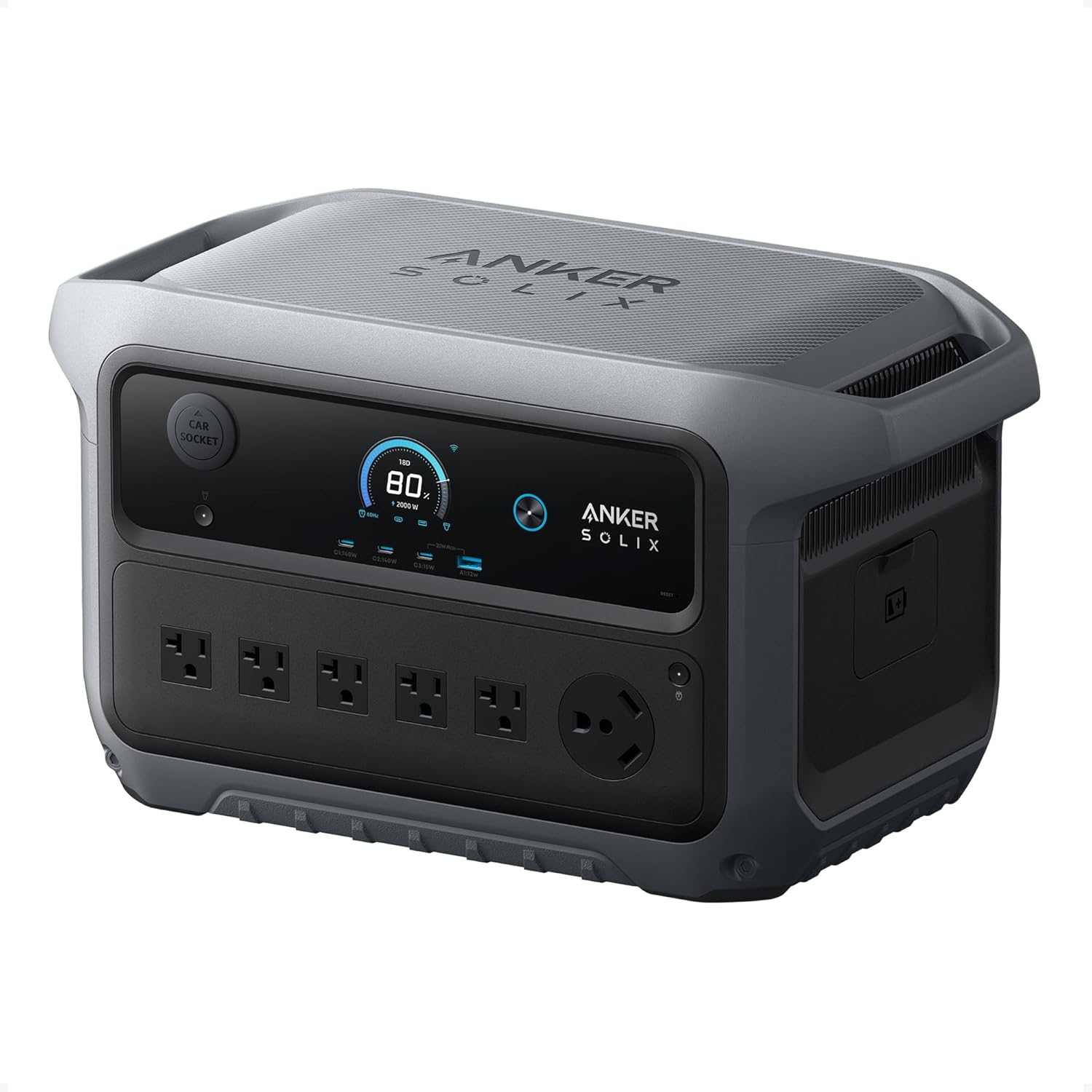
Breaking Down Anker’s 2025 Power Station Lineup
1. Compact Powerhouses: For Mobility and Essential Devices
1.1 Anker SOLIX C300 DC – The Ultimate Travel Companion
Imagine having a power source that fits in your backpack yet can charge your laptop multiple times, keep your camera running all day, and even power a small fan during a hot afternoon. That’s the Anker SOLIX C300 DC – a compact powerhouse weighing just over 6 pounds.
With 288 watt-hours of capacity and 300W output, this station is perfect for:
- Digital nomads working from coffee shops or co-working spaces
- Photographers and videographers need to power equipment on location
- Weekend campers who need to keep phones, lights, and small appliances running
- Emergency preparedness for keeping communication devices charged during outages
While it lacks AC outlets, it makes up for this with an impressive array of USB ports, including two USB-C ports that output 140 watts each – enough to rapidly charge even power-hungry devices like MacBook Pros. It even includes a nice camp light for those overnight adventures
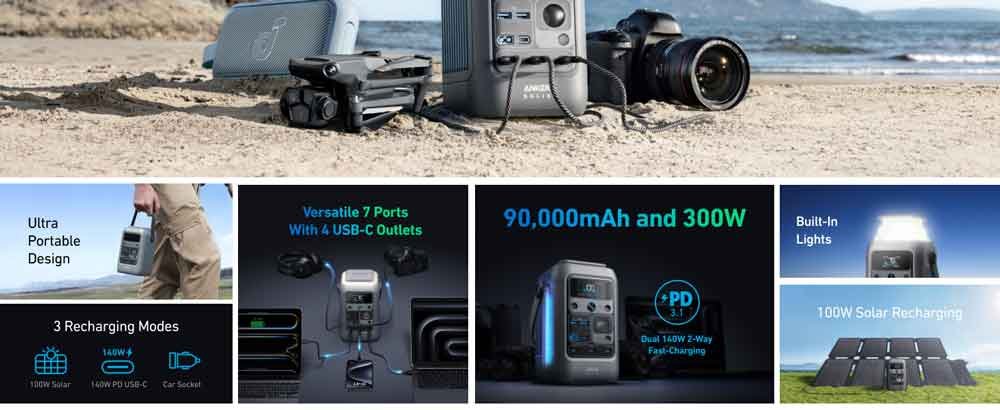
1.2 Anker SOLIX C1000 – The Balanced Performer
Stepping up in capacity, the Anker SOLIX C1000 hits what many consider the sweet spot for portable power: enough capacity for serious use without backbreaking weight. With 1,056 watt-hours (expandable to 2,112) and 1,800W output, this model can handle more demanding appliances like televisions, blenders, and most power tools.
Reviewers particularly praise its rapid recharge capability – going from zero to full in just 88 minutes, or even 65 minutes using the ultra-fast charge mode via the app. Six AC outlets mean you can power multiple devices simultaneously, making it ideal for:
- Tailgating parties and outdoor entertainment
- Extended camping trips for families or groups
- Home backup power for routers, lights, and medical devices like CPAP machines
- Worksite power for contractors needing to run tools without grid access
One minor tradeoff noted by testers is the potentially noisy fan, so it might not be ideal for situations where absolute quiet is priority one, like bedside medical device use.

2. Serious Power Solutions: For Home Backup and Off-Grid Living
2.1 Anker SOLIX F2000 – The Off-Grid Specialist
When your power needs extend beyond occasional use to potentially running a tiny home, RV, or serious backup system, the Anker SOLIX F2000 enters the conversation. With 2,048 watt-hours (expandable to 4,096) and 2,400W output, this model is built for substantial energy demands.
What makes the F2000 special is its rugged design with wheels and a focus on off-grid capability. Paired with a 200W solar panel, it can maintain power indefinitely in sunny conditions. Key features include:
- 10-year lifespan with LFP battery technology
- Ultra-fast recharge from 0-80% in about 1.4 hours via AC
- Smart app control with Wi-Fi and Bluetooth connectivity
- Wheeled design for relatively easy transport despite its 67-pound weight
This is the station you want for van life, extended boondocking, or serious home backup, where you might need to run a refrigerator, lighting, and communication devices for days.

2.2 Anker SOLIX F3000 – The Feature-Packed Powerhouse
The Anker SOLIX F3000 represents what many consider the pinnacle of balance between capacity and features in Anker’s lineup. With 3,000 watt-hours and a manageable 91.5-pound weight (complete with wheels and a telescopic handle) , it brings professional-level power in an accessible package.
Testers have put this unit through its paces in real-world scenarios, with one reporting: “We powered a griddle, coffee maker, hair dryer, and even an air fryer over a long weekend camping trip. It also served as our main power source for our tent lights, charging phones, and running a large fan all night while we slept.” The same user later used it to run construction tools, including table saws, sanders, and a 120V hammer drill on a remote farm.
Standout features include:
- Built-in sleep mode to reduce idle energy drain
- Anderson port for RV use
- Daisy-chaining capability to link two units for a 240V output
- Multiple recharge options, including solar (up to 2,400W), AC, and even EV charging with appropriate cables.
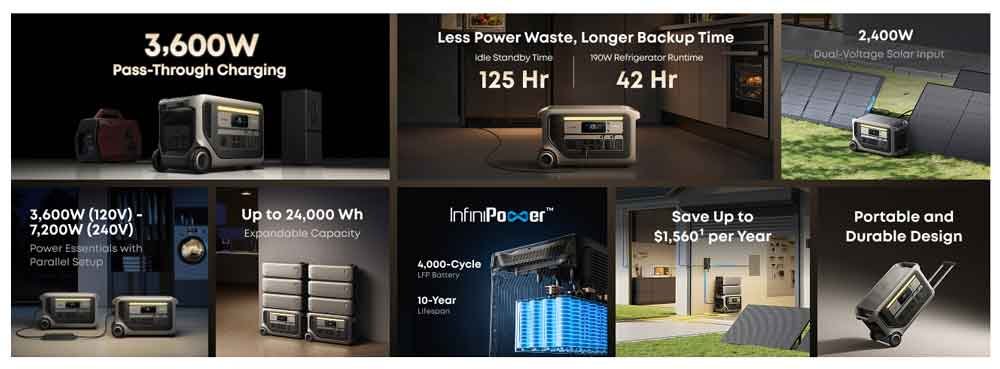
2.3 Anker SOLIX F3800 Series – The Ultimate Home Backup
For those who need maximum power and expandability, the Anker SOLIX F3800 and its enhanced sibling, the F3800 Plus, represent the top tier of Anker’s 2025 offerings. With a massive 3,840Wh base capacity (expandable to a staggering 53.8kWh with additional batteries) and 6,000W output, these units can power everything from central air conditioning to electric vehicle charging.
The difference between the F3800 and F3800 Plus comes down to a few crucial features:
- Generator bypass: The F3800 Plus allows direct connection to a diesel generator for seamless backup power when solar or grid options aren’t available
- Enhanced cooling system for better performance during extended high-power use
- Higher solar input (3,200W vs. 2,400W) for faster recharging
These units are on the heavier side (approximately 132-136.7 pounds), but come with sturdy wheels for mobility. With their 240V split-phase capability, they can handle serious home appliances like dryers and well pumps, effectively serving as a whole-home backup solution during extended outages.
Table: Anker SOLIX Power Station Comparison (2025 Models)
| Model | Capacity | Weight | Output | Best For | Special Features |
|---|---|---|---|---|---|
| C300 DC | 288Wh | 6.17 lbs | 300W | Travel, photography | Ultra-portable, multiple USB-C ports |
| C1000 | 1,056Wh | 28.7 lbs | 1,800W | Camping, tailgating | 6 AC outlets, ultra-fast charging |
| F2000 | 2,048Wh | 67 lbs | 2,400W | RV, off-grid living | Solar compatible, wheeled, expandable |
| F3000 | 3,000Wh | 91.5 lbs | Not specified | Home backup, jobsites | Daisy-chaining, EV charging, wheels |
| F3800 Plus | 3,840Wh | 136.7 lbs | 6,000W | Whole-home backup | Generator bypass, 240V, massive expandability |
Key Features That Set Anker Apart in 2025
1. LFP Battery Technology – Longevity and Safety
When you invest in a portable power station, you’re not just buying for today—you’re hoping it will serve you reliably for years to come. This is where Anker’s commitment to LFP (Lithium Iron Phosphate) battery chemistry makes a significant difference. Unlike standard lithium-ion batteries, LFP batteries offer:
- Exceptionally long lifespan: Most Anker SOLIX models promise 3,000+ charge cycles while maintaining 80% of original capacity – that’s nearly 10 years of daily use!
- Enhanced safety: LFP batteries are more stable and less prone to overheating, making them safer for home use.
- Maintained capacity: Even after years of use, these batteries retain their ability to hold a charge, ensuring your investment lasts.
As one reviewer noted about Anker’s approach: “It’s where power, durability, and usability meet, and the reason that Anker SOLIX power stations earn the top spot.”
2. Solar Compatibility – Truly Off-Grid Freedom
What good is a portable power station if you can’t recharge it when away from the grid? Anker’s solar compatibility transforms these units from temporary battery backups to truly sustainable power solutions. Most Anker SOLIX models support solar charging, with the higher-end units like the F3800 Plus accepting up to 3,200W of solar input – enough to fully recharge in under two hours under ideal conditions.
This solar capability means you can:
- Camp indefinitely without needing to return to civilization to recharge
- Maintain backup power during extended grid outages when conventional charging isn’t available
- Reduce your carbon footprint by harnessing renewable energy rather than relying on gas generators
The Anker SOLIX F2000 paired with a 200W solar panel is specifically marketed as a “solar generator” for this reason, providing complete energy independence for serious off-grid enthusiasts.
3. Smart Features – Intelligent Power Management
In 2025, a power station isn’t just about raw capacity—it’s about how intelligently it manages and delivers that power. Anker’s smart app control, available on many models, allows you to monitor and manage your power station from your smartphone. Through Wi-Fi or Bluetooth connectivity, you can:
- Check remaining battery percentage and estimated runtime
- Control individual ports remotely
- Update firmware to access new features
- Monitor input and output in real-time
- Enable power-saving modes to extend battery life
Additionally, features like the Storm Guard on the F3800 Plus automatically charge the unit before severe weather hits, ensuring you have maximum backup power when needed most. It’s these thoughtful touches that elevate Anker stations from simple battery boxes to smart energy management systems.
How to Choose the Right Anker Power Station for Your Needs
1. Assess Your Power Requirements
Choosing the right power station begins with honestly evaluating what you need to power and for how long. Ask yourself these questions:
- What devices will I typically run? Make a list of your essential devices and note their wattage requirements (usually found on a label). Remember that devices with motors (like refrigerators) often require 2-3 times their rated wattage to start up.
- How long do I need power? Is this for overnight camping trips, weekend outages, or potentially multi-day emergencies?
- Where will I use it? Does it need to be lightweight for hiking, or will it primarily stay in one location?
- How will I recharge? Do you have access to solar panels, or will you primarily use wall charging?
As a rough guide:
- Basic electronics (phones, laptops, lights): 300-500Wh models like the C300 DC
- Weekend camping with small appliances: 1,000-2,000Wh models like the C1000 or F2000
- RV living or serious home backup: 3,000Wh+ models like the F3000 or F3800 series
2. Understand Key Specifications
When comparing models, pay attention to these critical specs:
- Watt-hours (Wh): This indicates total energy capacity—think of it as the size of your fuel tank. Higher numbers mean more runtime.
- Watts (W) output: This determines what appliances you can run. A 1,800W station can run more powerful devices than a 300W station.
- Cycle life: How many charge/discharge cycles the battery can handle before significant degradation. Anker’s LFP batteries typically offer 3,000+ cycles.
- Recharge time: How long it takes to go from empty to full. Anker’s ultra-fast charging can refill some models in under 90 minutes.
- Port variety: Ensure the station has the right types and number of ports for your devices.
3. Consider Complementary Gear
Your power station might be the star of the show, but supporting equipment can dramatically enhance its usefulness:
- Solar panels: Anker offers compatible solar panels in various sizes (100W, 200W, etc.) for truly off-grid recharging.
- Expansion batteries: Models like the F2000, F3000, and F3800 support additional batteries to multiply your capacity.
- Protective cases: While many Anker units have rugged designs, additional protection can be wise for outdoor use.
- Proper cables: Ensure you have the right cables for your devices, especially for high-wattage USB-C charging.
Conclusion: Power Your World with Confidence
In 2025, Anker portable power stations represent a remarkable convergence of capacity, innovation, and user-friendly design. Whether you’re keeping your smartphone charged during a weekend camping trip with the compact C300 DC or ensuring your family’s comfort and safety during extended power outages with the massive F3800 Plus, there’s an Anker solution designed for your needs.
The beauty of these modern power stations lies in their versatility—they’re not just for emergencies anymore. They’re for creating memorable outdoor experiences, enabling remote work, pursuing hobbies without constraints, and providing peace of mind in an uncertain world. With technology that lasts for years and features that genuinely consider real-world use, Anker has positioned itself as a leader in the portable power space.
As you consider your next power station, remember that you’re not just buying a battery—you’re investing in freedom, security, and the ability to power what matters most to you, wherever life takes you.
Frequently Asked Questions
- Can I use an Anker power station to run my entire home during an outage?
This depends on the model and your home’s power requirements. The Anker SOLIX F3800 series, with its 6,000W output and 240V capability, can power many essential home systems, including refrigerators, well pumps, and even central air conditioning in some cases. However, for whole-home backup, you’ll likely need additional expansion batteries and possibly the Anker Home Power Panel for seamless integration. - How long do Anker portable power stations typically last?
Anker SOLIX stations with LFP battery technology are rated for 3,000+ charge cycles while maintaining 80% of their original capacity. With normal use, this translates to approximately 10 years of service, making them a long-term investment rather than a disposable gadget. - Can I take my Anker power station on an airplane?
No. Due to their large battery capacity, all Anker SOLIX power stations exceed the size limits permitted by airlines for carry-on or checked luggage. The Federal Aviation Administration restricts lithium batteries in air travel to 100 watt-hours, while even Anker’s smallest model (C300 DC) has 288Wh. - How does Anker’s solar charging work in real-world conditions?
Anker power stations can recharge using compatible solar panels, with higher-end models supporting up to 3,200W of solar input. In optimal sunlight conditions, this can mean full recharges in under two hours. However, real-world performance depends on factors like panel angle, weather conditions, and geographic location. For consistent off-grid power, most users deploy more solar capacity than the minimum requirement. - What’s the difference between the Anker F3800 and F3800 Plus?
The key differences lie in the generator bypass capability (available on the Plus model only), higher solar input on the Plus (3,200W vs. 2,400W), and an enhanced cooling system in the Plus. The Plus model is designed for more demanding users who need industrial-grade resilience and direct generator integration for extended backup scenarios.

| Anker Solar Generator Collections | |
|---|---|
 |
 |
| Check Amazon Discount | Check Walmart Discount |






